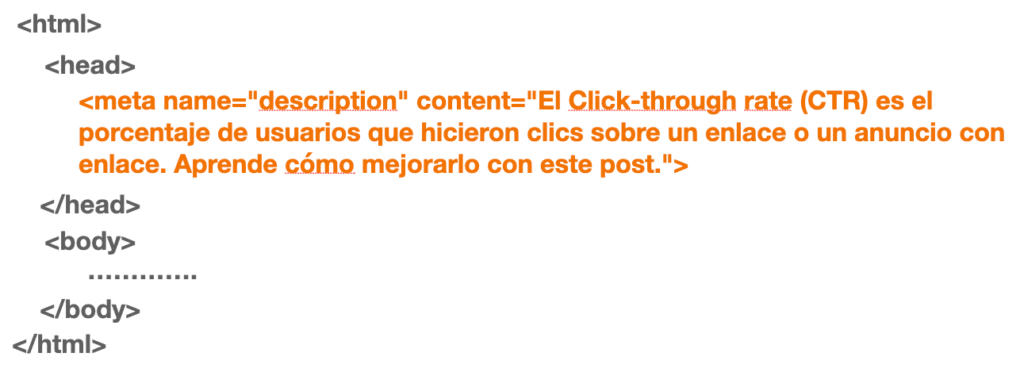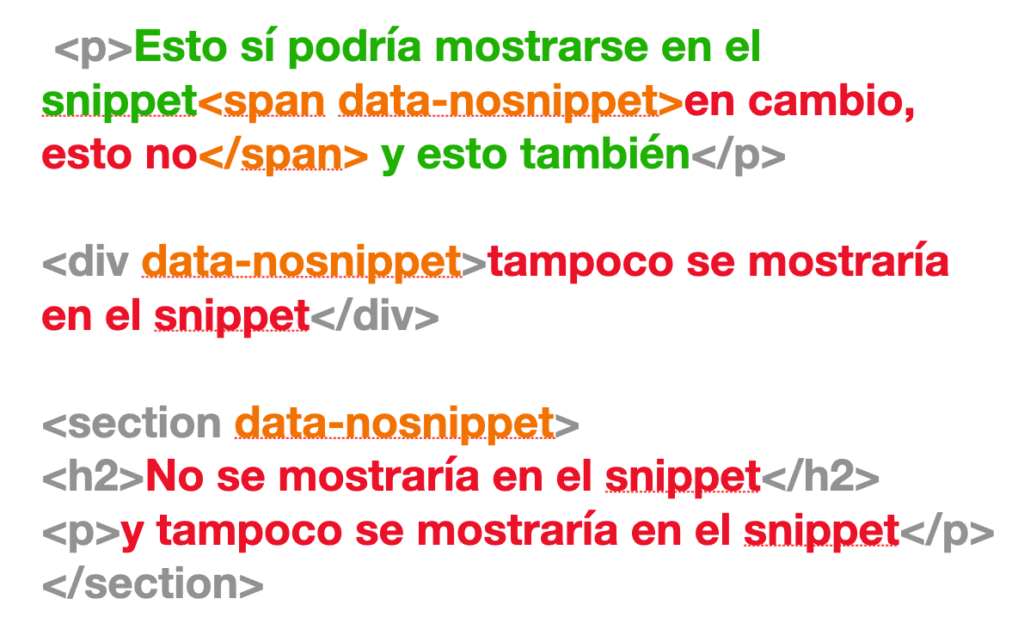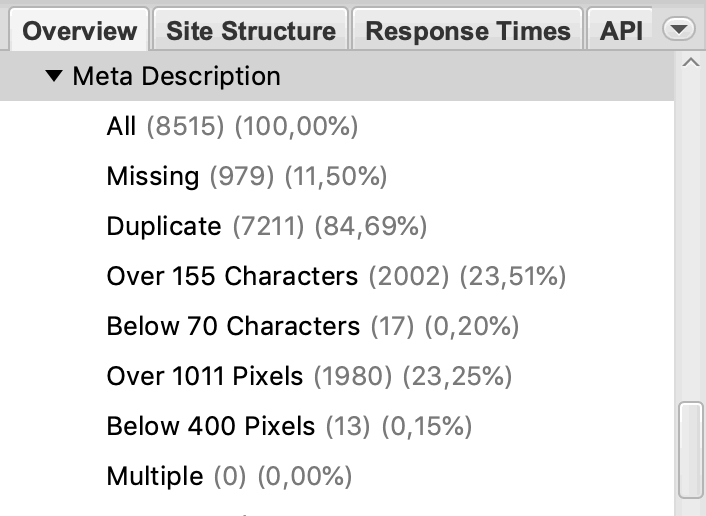Written by Fernando Maciá
Index
The meta description is a meta tag whose content serves as the primary reference for the description that search engines display under the title in the snippet of their search results:
The meta description must be included between the tags <head> and </head> of the page and its length must not exceed 150 characters, spaces included.
The meta description plays no role when the user visits the website. Nor does it influence the calculation of page relevance and, therefore, its positioning. The main function of this meta tag is to present our best value proposition in the Google result itself, a powerful reason to click on ours before any other.
How descriptions are created in search result snippets
The text displayed in the result description can come from the meta description tag or from the rest of the page content. As a general rule, Google presents the user-defined text in the meta description. Only when it is not sufficiently descriptive or relevant, or detects indications of abuse, will it select a different fragment of the page content.
Therefore, it is the responsibility of webmasters to always provide a relevant meta description that accurately summarizes the content of the page. This way the user will know that it contains what he/she is interested in.
Currently, we cannot prevent Google from extracting the description from other content areas, although we can prevent it from displaying a description including the meta robots with the “Nosnippet” directive. However, if we want our page to be positioned and visited, this practice would be counterproductive.
Sometimes you may want to prevent content from certain parts of the page from appearing in the result. We will use the data-nosnippet attribute for this purpose. This can be done at the HTML element level in the tags <span>, <div> and <section>:
How does the meta description influence organic traffic?
As the meta description does not influence the positioning of a page, its wording can be neglected. This approach is wrong, because the meta description acts as a very important bridge between the user and his inclination to visit a certain website for the following reasons:
- We are used to glancing at this brief summary to decide which result we will click on.
- A meta-description that connects with the user’s buying motivations or interest will increase the click-through rate of the result.
- If we include keywords that match the user’s search, they will appear in bold in the result, increasing their visibility.
- If we also add some incentive, we will awaken the user’s attention and he/she will feel the desire to visit the page.
In short, the meta description is an advertising space for our product or service that we cannot miss.
How to optimize the meta description according to the website
When optimizing the meta description, take into account the type of page and its content. Broadly speaking, we can differentiate between different types of websites:
- E-commerce: it can be a listing page (category or product family) or a product card. In this case, we recommend including the target keyword of the page and highlighting the competitive advantages of our business, along with a call to action that encourages clicks.
- Corporate website: the meta description will contain a brief summary of the page and, as far as possible, the target keyword for positioning will be included.
- Blog: the information presented will be merely informative. A very brief summary of the site and what the user will discover or learn from it. We will avoid giving you the gist of the content, otherwise you will lose interest in visiting us.
Writing meta descriptions
If we have already convinced you of the importance of a good meta description, here are our tips to improve it:
- A good meta description must be unique and original for each page of your website. On websites with large volumes of dynamic content, this meta tag is composed from patterns defined for each template where static text strings are combined with dynamic values extracted from a database.
- Establish the main idea(s) you want to tell the user: you only have 140 characters to do so. Be concise and to the point. If we include an excessively long description, Google will display it truncated or use another text string from the page content.
- Use language that encourages the user to click and enter. Outlet, discounts, offers, free shipping, 24-hour shipping, official or exclusive distributor of a brand… Highlight any differential advantage that responds to any of your customers’ purchase motivations: price, brand, exclusivity, guarantee, security, trust, experience…
- Include keywords naturally in the wording. Do not over-optimize but take the opportunity to add relevant complementary data to the information presented in the title. Is there anything worth noting? Hotels, for example, often include the tagline “minimum price guarantee” to discourage comparison of their prices with aggregators.
- Use calls to action (CTA). For example: “Click here to learn more” or “Buy it now. Limited units”.
- Check which descriptions are not displayed in full in the results and correct them.
- Avoid including excessive keywords. This impairs the search experience and will lead Google to choose a different text snippet.
- Make sure that all your pages have a meta description.
Tools to check meta descriptions
There are different tools to detect duplications, gaps and opportunities for improvement in our meta descriptions.
Screaming Frog
Enter the URL of your site and, once the analysis is complete, check the meta description tab:
To speed up the analysis, I recommend that you use the filters on the right. You will be interested, above all, in these:
- Missing: pages that have no meta description.
- Duplicate: pages with the same meta description as others.
- Multiple: pages with more than one meta-description.
- Over 155 characters: descriptions longer than 150 characters.
Thruuu
Thruuu is a free tool for analyzing Google results. With it, we can extract the titles, descriptions and much more information of the pages positioned for a given keyword but we can also extract the titles and meta description that Google is showing for a listing of our own website, if we search with the command site:
Very interesting to detect when Google accepts our descriptions, when it truncates them and when it replaces them. This way we can do a finer job of optimizing them.
SEMRush
SEMRush’s Site Audit functionality is really useful for these cases. Register your project and you will get a list of pages to improve your meta descriptions.
As an additional detail, remember that meta descriptions – in addition to being used by search engines – are also displayed when a link is shared on the main social networks such as Facebook or LinkedIn. One more reason to take great care in writing them well.
Additional references
Special tags that Google understands
Display effective titles and snippets in the results
Meta Descriptions in 2015 on the Moz blog by Dr. Peter J. Meyers





